 全部商品分类
全部商品分类



Monoclonal antibody is produced by immunizing animals with a synthetic peptide corresponding to residues near the amino terminus of human ASCT2 protein.


Product Usage Information
| Application | Dilution |
|---|---|
| Western Blotting | 1:1000 |
| Immunoprecipitation | 1:50 |
| Immunohistochemistry (Paraffin) | 1:200 - 1:800 |
| Immunofluorescence (Immunocytochemistry) | 1:400 - 1:1600 |
| Flow Cytometry (Fixed/Permeabilized) | 1:200 - 1:800 |





Specificity/Sensitivity
Species Reactivity:
Human, Monkey




Supplied in 10 mM sodium HEPES (pH 7.5), 150 mM NaCl, 100 µg/ml BSA, 50% glycerol and less than 0.02% sodium azide. Store at –20°C. Do not aliquot the antibody.
For a carrier free (BSA and azide free) version of this product see product #69974.


参考图片
Flow cytometric analysis of fixed and permeabilized HT-29 cells using ASCT2 (D7C12) Rabbit mAb (blue) compared to concentration matched Rabbit (DA1E) mAb IgG XP® Isotype Control #3900 (red).
Western blot analysis of extracts from HT-29 cells, untreated or treated with peptide N-glycosidase F (PNGase F), and untreated SW620 cells using ASCT2 (D7C12) Rabbit mAb.
Immunohistochemical analysis of paraffin-embedded SW480 cell pellet (left, high-expressing) or SK-MEL-5 cell pellet (right, low-expressing) using ASCT2 (D7C12) Rabbit mAb.
Immunohistochemical analysis of paraffin-embedded human colon carcinoma using ASCT2 (D7C12) Rabbit mAb.
Immunohistochemical analysis of paraffin-embedded human lung adenocarcinoma using ASCT2 (D7C12) Rabbit mAb (left) compared to concentration matched Rabbit (DA1E) mAb IgG XP® Isotype Control #3900 (right).
Immunohistochemical analysis of paraffin-embedded human squamous cell lung carcinoma using ASCT2 (D7C12) Rabbit mAb.
Immunohistochemical analysis of paraffin-embedded human non-Hodgkin's lymphoma using ASCT2 (D7C12) Rabbit mAb.
Immunohistochemical analysis of paraffin-embedded human serous papillary carcinoma of the ovary using ASCT2 (D7C12) Rabbit mAb.
Immunohistochemical analysis of paraffin-embedded human prostate carcinoma using ASCT2 (D7C12) Rabbit mAb.
Confocal immunofluorescent analysis of HT-29 cells using ASCT2 (D7C12) Rabbit mAb (green). Blue pseudocolor = DRAQ5® #4084 (fluorescent DNA dye).



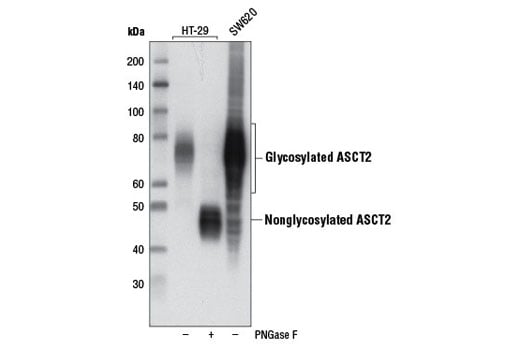
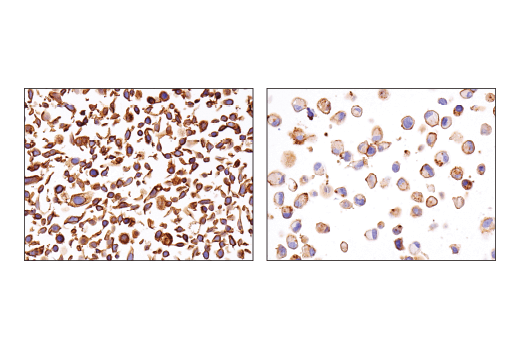
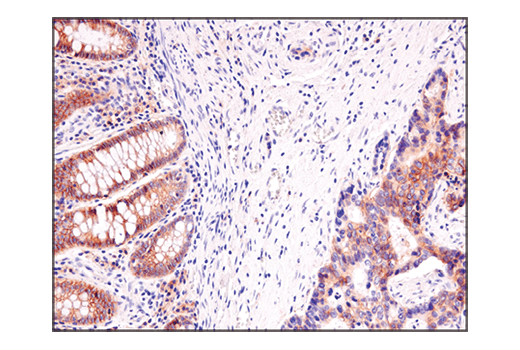
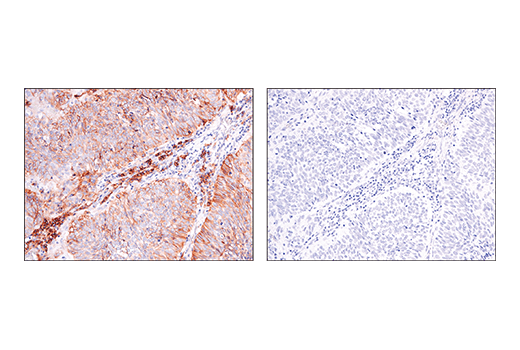
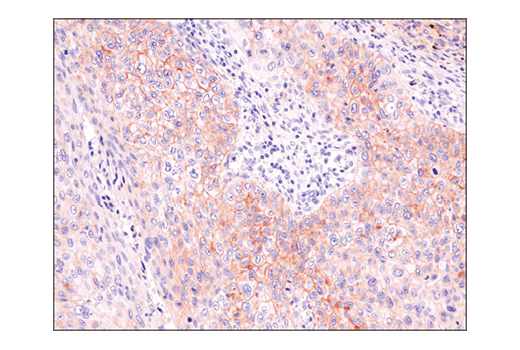
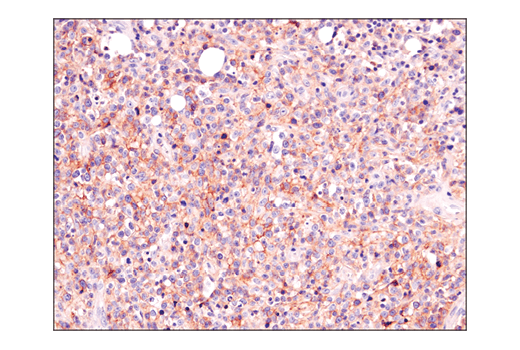
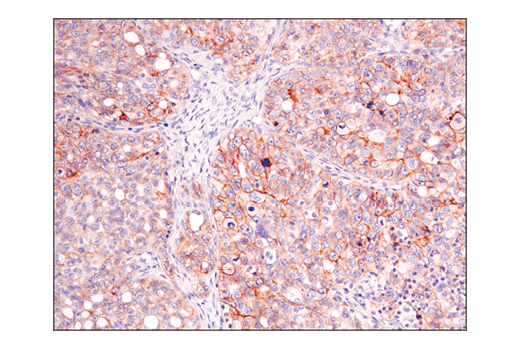
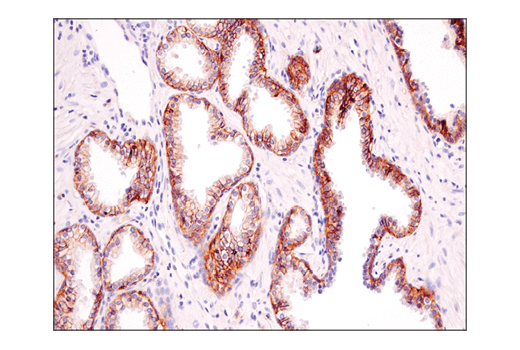
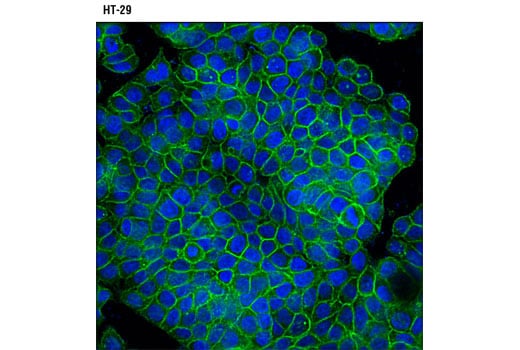


 用小程序,查商品更便捷
用小程序,查商品更便捷




